 Your new post is loading...
 Your new post is loading...
We are pleased to announce the launch of our Adaptive Media Streaming over HTTP/2 trial. We are inviting you to participate in order to help us gather important data.
The experimental HTTP version 2 protocol promises to improve the web browsing experience but what does it mean for HTTP-based media streaming technologies such as MPEG-DASH?
Expect big changes from the renamed Wowza Media Server, which now offers a GUI. Both first-timers and power users will be happy about it.
Just how much faster does the new graphical user interface (GUI) make setting up Wowza Streaming Engine, the fourth generation of Wowza Media Server?
Very fast, if one wants to do a standard configuration.
For providers trying to overcome the limitations of ABR protocols, manifest manipulation is quickly gaining traction as a solution. But which approach is right for your organization? There are several different approaches to manifest manipulation but in general they can be divided into three primary types. In these weeks blog we’ll look at them in detail, as well as the benefits and limitations of each: 1. Manifest “Conditioning” 2. Manifest Builder or “Playlist Re-writing” 3. Dynamic Manifest Manipulation (DMM)
What is significant about all ABR formats is that they separate the control aspects of the protocol from the video data. They share the general concept that video data is encoded into chunks and placed onto an origin server or a CDN. To start a streaming session, client devices load a manifest file from that server that tells them what chunks to load and in what order. The infrastructure that serves the manifest can be completely separate from the infrastructure that serves the chunks. The separation of these concerns provides a basis for dynamic content replacement, as it is possible to dynamically manipulate the manifest file to point the client device at an alternative sequence of video chunks that have been pre-encoded and placed on the CDN. The ability to swap chunks out in this way relies on the encoding workflow generating video chunks whose boundaries match possible replacement events.
Click here to edit the content...
Motorola Mobility is claiming a world first with its new 3-gigapixel video transcoder, designed to enable rich, multi-screen HD and SD everywhere experiences from a slim, energy-efficient unit.
The Motorola GT-3 ABR Transcoder is capable of processing up to 3bn pixels of video content every second – equivalent to nearly 50 full resolution HD programmes – and supports up to 24 inputs and up to 16 output streams per input programme.
In this IBC interview, Ramin Farassat, VP of Product Marketing and Business Development at RGB Networks, provides a crisp analysis of where adaptive bit rate streaming could be heading next. It considers the use of just-in-time packaging for multi-screen nPVR and VOD, with its potential to save server storage space, and the inclusion of audio in adaptive streaming so consumers with more bandwidth can jump from stereo to 5.1 surround sound. He also outlines why some operators are conducting friendly trials with ABR set-top boxes, hoping to unify all video infrastructure around IP ABR video.
"Dynamic Adaptive Streaming over HTTP (DASH) is a convenient approach to transfer videos in an adaptive and dynamic way to the user. As a consequence, this system provides high bandwidth flexibility and is especially suitable for mobile use cases where the bandwidth variations are tremendous. In this paper we have integrated the Scalable Video Coding (SVC) extensions of the Advanced Video Coding (AVC) standard into the recently ratified MPEG-DASH standard."
In most cases, modern video content delivery systems are based on HTTP Streaming. This technology delivers video in a series of fragments (chunks), several seconds each. The most popular video delivery formats are Apple HTTP Live Streaming and Adobe HTTP Dynamic Streaming. In the near future, MPEG DASH will also probably become popular. The benefits offered by this type of delivery consist in a more stable video platform operation over a heterogeneous public network (Internet) and use of existing mechanisms of traditional CDN networks (HTTP chunk caching). But often traditional media is not sufficient, and large-scale online video services usually require a more flexible management of video content delivery. In our projects, we use our Video Load Balancer. In this post, we are going to outline the basics of its operation that might be helpful to your projects regardless of the load balancing technology you use.
SPB TV Solution empowers 3D and regular 2D video formats encoding and streaming in multiple quality options, from mobile to HD, to provide the brightest user experience on a small phone as well as on a big modern TV. Due to anaglyph and side-by-side technology support, 3D video can be delivered to both 3D-enabled and usual screens. SPB TV pays great attention to the stability and quality of the video playback in any network capabilities, so its solutions support all major technologies of adaptive streaming: RTSP, Apple HTTP Live Streaming (HLS), Microsoft Smooth Streaming, Adobe HTTP Dynamic Streaming, as well as MPEG-DASH - a new unified adaptive bitrate standard developed by ISO.
The Open IPTV Forum successfully completed their latest interoperability test event at the Orange Labs in Rennes, France, where members successfully demonstrated an OIPF-based IPTV solution. The scope and features demonstrated at this event were selected by Orange, and chosen as being representative of those which could constitute a viable commercial offering for a typical tier-one service provider. During 5 days of engineering, testing and demonstrations, OIPF members Ericsson, Fraunhofer FOKUS, Opera Software, Orange and Zenterio successfully resolved and demonstrated interoperability in the areas of service discovery, delivery of linear and on demand content, HTTP adaptive streaming and terminal based applications, all according to the published OIPF specifications.
NAB 2012 closed its doors two weeks ago, so it’s a good time to draw an appraisal on various themes concerning OTT issues, and especially premium OTT issues, that have been handled through industry technology offer during the tradeshow. Here we’ll go from production to distribution and examine the salient NAB facts and products, at least the ones which have a potential influence on OTT workflows evolution in the coming months (or years ?).
|
As we reported previously, the Broadpeak solution introduces very lightweight clients into the home router/gateway and these intercept the unicast stream requests made by a tablet or smartphone to an origin server. The client looks for a multicast stream of the linear content instead. The platform operator works with a content owner to make the most popular channels available in multicast, perhaps during peak times or for popular shows or live sports, or even 24/7. The nanoCDN client receives this multicast stream instead, then converts it to unicast ABR (adaptive bit rate) inside the home so it can be watched on the multiscreen devices without any changes to their apps.
By replacing multiple unicast streams with a single multicast stream in the broadband network, nanoCDN reduces the bandwidth demands for linear/live video. nanoCDN is pioneering because of the way it harnesses multicast within a CDN environment and because it makes in-home devices an extension of the CDN.
There is hope on the horizon. MPEG-DASH exists as an open alternative to these closed standards. Two of the three companies with proprietary closed standards have been actively involved in the formation and promotion of DASH. These efforts have been clearly successful, as DASH delivery of content is becoming more and more prevalent – for example, Netflix, Hulu and YouTube have all released versions of their content via DASH delivery. Through the efforts of Browser manufacturers, Media Source Extensions (another open standard), have become available in many browsers allowing delivery of DASH content without any additional plugins required. Unfortunately, HLS remains the most common delivery format in the US, and Apple (the author/owner of HLS) has shown no interest in supporting MSE in their browser. A tipping point is clearly on the way, which will see a massive growth in DASH delivery. Eventually Apple will be forced to embrace the current open standard, or risk losing content which has made their platform so appealing. The irony of course is that Apple has done so much marketing touting themselves as leaders of the “open web” movement, and they are the long holdout stalling the success of this open standard.
This white paper explores MistServer, a greenfield initiative by DDVTech BV, The Netherlands-based startup who recently created a lightweight, scalable media server. With a goal of solving significant media delivery problems, MistServer’s design offers benefits over current solutions. Brains and brawn, just not in the same place. DDVTech’s MistServer is based on a philosophy that a media server should do what it does best: serve audio and video streams. They split the brawn (MistServer) from the brain (MistSteward, MistCenter, or a web control interface).
It's all about DASH: Adoption is moving at a rapid pace, as industry insiders see a strong need to get DASH implemented in the field in the coming year. The Pantos spec, as it is known in the industry, is a series of working drafts for HLS submitted by two Apple employees as an information draft for the Internet Engineering Task Force. As of the time of this article, the Pantos spec is currently at informational version 10. Much has changed between the early versions and the most recent v10 draft, but one constant remains: HLS is based on the MPEG-2 Transport Streams (M2TS), has been in use for almost 2 decades, and is deployed widely for varied broadcast and physical media delivery solutions. In that time frame, however, little has changed for basic M2TS transport stream capabilities. For instance, M2TS still lacks an integrated solution for digital rights management (DRM). As such, all HLS versions cannot use "plain vanilla" M2TS, and even the modified M2TS used by Apple lacks timed-text or closed-captioning features found in more recent fragmented elementary stream streaming formats. Yet Apple has been making strides in addressing the shortcomings of both M2TS and the early versions of HLS: In recent drafts, the HLS informational draft allows for the use of elementary streams, which are segmented at the time of demand rather than beforehand. This use of elementary streams means that one Achilles' heel of HLS -- the need to store thousands, tens of thousands, or hundreds of thousands of small segments of long-form streaming content -- is now eliminated. Google, with its Android mobile operating system platform, has adopted HLS for Android OS 4. Some enterprising companies have even gone back and created HLS playback for earlier versions of Android OS-based devices.
Mistserver is a open-source multimedia streaming server developed by DDVTech a company based in Netherlands. This server will support some technologies : HLS, HDS, Smooth Streaming, RTMP, …
For the moment, HDS, RTMP and progressive download are available. You can push too livestream via RMTP. The company have two others solutions : MistSteward, MistCenter.
DDVTech positions his solution in a competitive market with some actors : Adobe Media Server, Wowza, Red5, Apache, …
Service providers deploying IPTV have tended to use constant bit rate (CBR) as opposed to variable bit rate (VBR) encoding. Several emerging use cases, however, could bring VBR back into play. It also is playing a surreptitious role in making adaptive bit rate (ABR) streaming even more efficient.
Audio sometimes gets lost in the noise of video technology. But what more quickly degrades a viewer’s quality of experience (QoE) than a voice not synchronized with picture or loudness levels that fluctuate wildly between channels? The bottom line upfront: Pay TV operators neglect audio at the peril of losing both eyes and ears of their customers. One company that agreed with the need for an efficient solution and went through this process of integrating with Dolby is RGB Networks. The driver from RGB’s perspective was ABR streaming to the set-top box, which has audio requirements higher than second-screen devices. Ramin Farassat, RGB Vice President of Product Marketing and Business Development, said this recent enhancement of Dolby’s technology allows for stereo to run at a low bit rate, and then as network conditions improve, it jumps to 5.1. “If I were doing it with today’s technology, there’s a break,” he said. “With Dolby, it’s a seamless switch.”
Intertrust Technologies Corporation today released Wasabi Express, a standards-based next generation DRM platform for mobile and desktop applications. Wasabi Express together with the Company’s DRM Cloud Services provides a single solution for service providers that want to distribute content using a Marlin DRM-compliant media player. Service providers, technology solutions providers and developers using Wasabi Express will have access to technologies that enable them to implement new content distribution business models for delivering over-the-top content to mobile and PC platforms. Wasabi Express offers extensive support for download and adaptive streaming media distribution models (including MPEG-DASH and HLS). It also enables content portability and compatibility with other Marlin clients and services. Wasabi Express is protected by tamper resistance technology from Intertrust’s whiteCryption subsidiary. Additional details on Wasabi Express are available at: http://www.intertrust.com/solutions/wasabi_express
Quality control software has been around for a while now; for an overview of the category and quick look at four entrants, check out "Quality Control Roundup: Catch the Mistakes Before They Go Live." Producing files for adaptive streaming throws some new wrinkles into the mix, however, both from a format and a management perspective. One of the first products that attempts to simplify QC for adaptive streams is Venera Technologies' Pulsar, which now can analyze adaptive streams produced for HTTP Live Streaming (HLS) and Smooth Streaming, but not HTTP Dynamic Streaming (HDS). In this review I take a look at Pulsar as a whole, with a focus on these new adaptive streaming-related capabilities.
Video service providers have become enamored of adaptive bit rate streaming as a way to deliver video to tablets and smartphones, but not everyone believes the technology will become the primary way video is delivered to the home. HTTP Adaptive Streaming (HAS) "is not ready for primetime TV," declared Pieter Liefooghe, chief solution architect and solution line manager at the video solutions and integration organization of Alcatel-Lucent, during a panel on the topic at last week's Managing & Monetizing OTT Video event in Boston. HAS is "okay for a single-stream, OTT-style of service, but as a basis of a primetime TV service, it's a challenging proposition," he added. But this doesn't mean HAS will never be suitable for primetime TV, as the shortcomings identified by Liefooghe relate to "out-of-the-box" HAS technology. He said, for example, that AlcaLu has identified some technologies and techniques that can be done on the routing platform and the content delivery network (CDN) to boost HAS performance enough to address some of its technical shortcomings. And he insisted there are ways to pare delays down to six seconds while still guaranteeing continuous playback. "There's a future for HAS as the new RTP," Liefooghe concluded.
SDC: Scalable Description Coding for Adaptive Streaming Media (Academic paper)
Abstract : Video compression techniques enable adaptive media streaming over heterogeneous links to end-devices. Scalable Video Coding (SVC) and Multiple Description Coding (MDC) represent well-known techniques for video compression with distinct characteristics in terms of bandwidth efficiency and resiliency to packet loss. In this paper, we present Scalable Description Coding (SDC), a technique to compromise the tradeoff between bandwidth efficiency and error resiliency without sacrificing user perceived quality. Additionally, we propose a scheme that combines network coding and SDC to further improve the error resiliency. SDC yields upwards of 25% bandwidth savings over MDC. Additionally, our scheme features higher quality for longer durations even at high packet loss rates. READ THE PAPER HERE : http://bit.ly/NHikKW
Edgeware, the technology leader in distributed video delivery, today announced availability of Orbit 3020 video server platform in the U.S. market. An integral part of Edgeware’s Distributed Video Delivery Network (D-VDN), the Orbit 3020 is the first in a next generation family of video servers that answers North American operators’ demands for massive scalability and flexibility delivering the most efficient power, space and cooling characteristics of any server in its class in the industry. Edgeware’s Orbit 3020 features and benefits include: - Support for Multiple Protocols and Environments - Lowest Space Requirements - Lowest Power Consumption - Unprecedented Density and Capacity Streaming Video Formats support :
• RTSP/UDP/RTP (MPEG-2 TS)
• MPEG-2
• MPEG-4 AVC/H.264
• Microsoft Smooth Streaming
• Apple HTTP Live Streaming
• Adobe HTTP Dynamic Streaming
• Widevine Adaptive Streaming ALSO IN THE NEWS : "Edgeware Announces Integration with SeaChange to Provide Complete Multiscreen Solution" http://www.streamingmedia.com/PressRelease/View.aspx?PRGuid=27392
|



 Your new post is loading...
Your new post is loading...

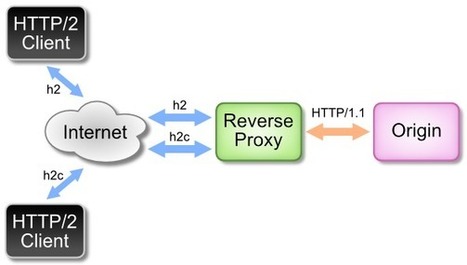

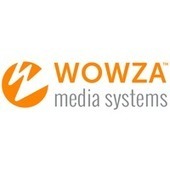
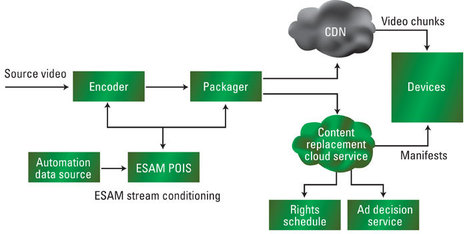

![The future of adaptive bit rate streaming [IBC VIDEO] | Video Breakthroughs | Scoop.it](https://img.scoop.it/QxPrakG637pE554p1DaDLTl72eJkfbmt4t8yenImKBVvK0kTmF0xjctABnaLJIm9)
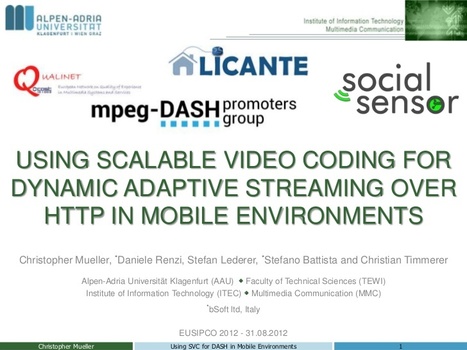

![SPB TV's "3D Video on 3 Screens" solution supports all ABR streaming protocols [PR] | Video Breakthroughs | Scoop.it](https://img.scoop.it/VsMI5yRgmCLYu155um0i1Dl72eJkfbmt4t8yenImKBVvK0kTmF0xjctABnaLJIm9)

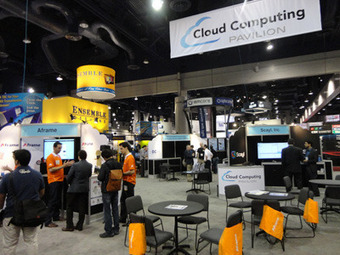



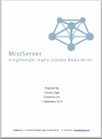

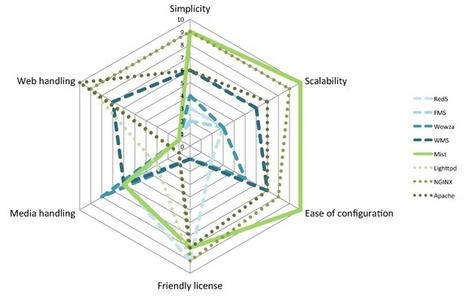
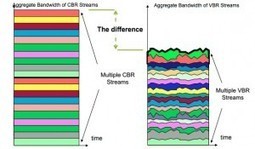


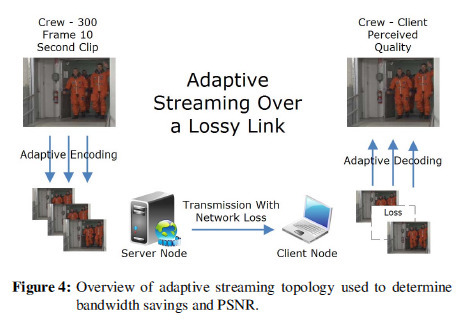
![Edgeware Launches the Industry’s Most Scalable and Efficient Video Server for Operators Worldwide [PR] | Video Breakthroughs | Scoop.it](https://img.scoop.it/E56uKmcgDkoSf92hmLEaADl72eJkfbmt4t8yenImKBVvK0kTmF0xjctABnaLJIm9)




